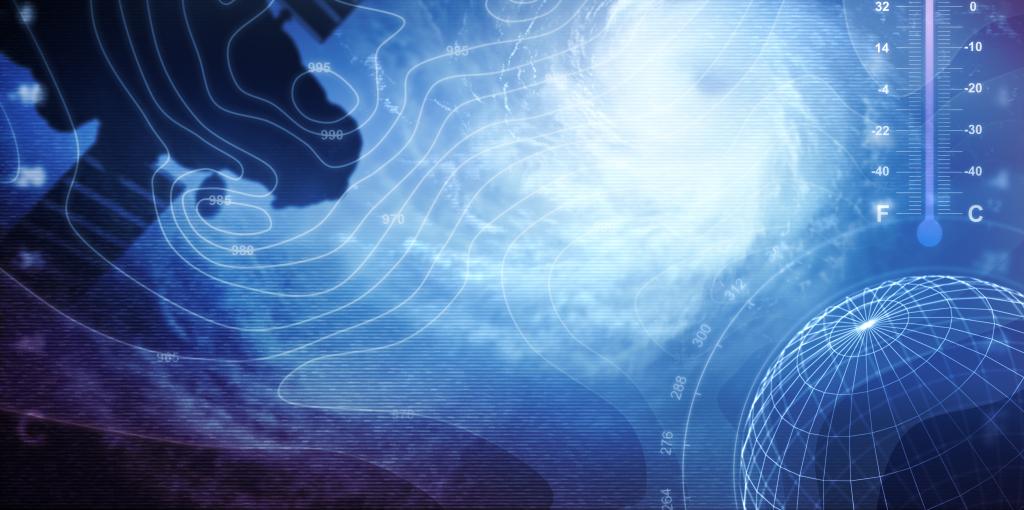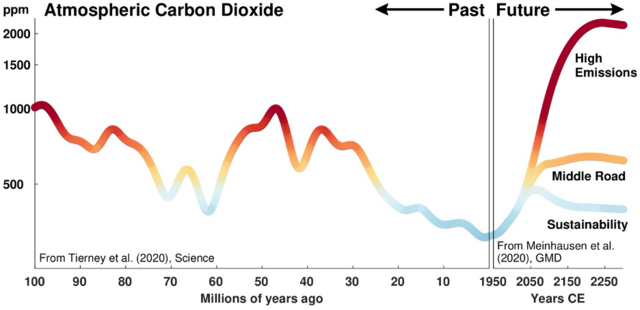Admission CTAs
Understanding Past Climate is Key to Predicting Future Climate
Summary: In a review paper published in the journal Science, Mason associate professor Natalie Burls joins a group of climate experts making the case for the relevance of paleoclimate data and modelling in the development of climate models. Such models are used globally to assess the impacts of human-caused greenhouse gas emissions, predict scenarios for future climate and propose strategies for mitigation.
The international team of climate scientists suggests that research centers around the world using numerical models to predict future climate change should include simulations of past climates, reaching back many millions of years before humans existed, in their evaluation of model performance.
"We urge the climate model developer community to pay attention to the past and actively involve it in predicting the future," said Jessica Tierney, the paper's lead author and an associate professor in the University of Arizona's Department of Geosciences Department of Geosciences." If your model can simulate past climates accurately, it likely will do a much better job at getting future scenarios right."
As atmospheric carbon dioxide concentrations continue rise due to man, and the world continues to warm, past climates become increasingly relevant for improving our understanding of how key elements of the climate system are affected by greenhouse gas levels,” shared Natalie Burls, associate professor in Mason’s Atmospheric, Oceanic, and Earth Science Department.
Unlike observational climate records, which typically only go back a century or two – a mere blink of an eye in the planet's climate history – paleoclimates cover a vastly broader range of climatic conditions that can inform and test climate models in ways the historical record cannot. These periods in Earth’s past span a large range of temperatures, precipitation patterns and ice sheet distribution.
“We have rapidly pushed up atmospheric carbon dioxide concentrations to values higher than they have been in the last 2 million years,” Burls added.
According to the study’s authors, as the heat trapped by these elevated carbon dioxide concentrations continues to be absorbed by our vast oceans the full impact remains unclear - glaciers melt rates and sea level rise change with time, and Arctic sea ice continues to decline at an alarming rate. Adding to this, if society does not act to curb its carbon dioxide emissions, in the coming centuries we could exceed values not seen in ~100 million years.
“The paleoclimate record provides important data that we can use to understand what this would mean for Earth’s climate and how well we are simulating it,” said Burls.
The paper reviews recent advances made within paleoclimate data collection, statistics, and modeling that help us better understand how the climate system responds to changes in atmospheric carbon dioxide. For the climate scientists modelling how aspects of our climate could change in the future, one of the great challenges is modeling how clouds change in response to the warming from increased atmospheric carbon dioxide. Differences in how clouds respond in these models leads to substantial differences in carbon dioxide induced global warming predictions for 2100 and beyond – what is referred to in the community as “climate sensitivity.” While there is no debate in the climate science community about human fossil fuel consumption pushing the Earth toward a warmer state for which there is no historical precedent, different models generate varying predictions. Some forecast an increase as large as 6 degrees Celsius by the end of the century.
Several of the latest generation models that are being used for the next report by the Intergovernmental Panel on Climate Change, or IPCC, have a higher climate sensitivity than previous iterations largely due to the more realistic treatment of how clouds can respond to various factors. In the review paper, Tierney et al., highlight that some of these models are better than others at producing the climates seen in the geologic record, which underscores the need to test climate models against paleoclimates. In particular, past warm climates highlight the role that clouds play in contributing to warmer temperatures under increased carbon dioxide levels. To this point, Burls is currently leading an NSF CAREER award that makes use of climate models, and data from several past warm periods in Earth’s history, to understand how clouds have controlled tropical climate and how it responds to warming.
For a full list of authors and funding information, please see the paper, "Past climates inform our future," Science, Nov. 6, 2020. DOI: 10.1126/science.aay3701

